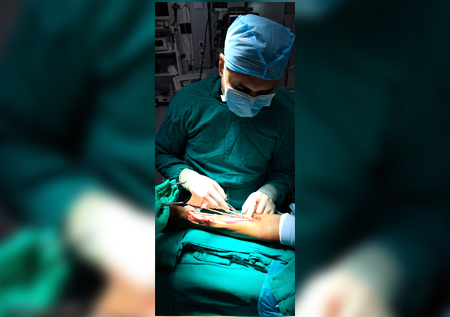
Posted on 9th Sep 2025, by Admin
As a head and neck cancer surgeon, I have witnessed firsthand how the diagnosis of oral cancer can profoundly impact a patient’s life. Beyond the fear and uncertainty that come with the diagnosis, the treatment itself—especially surgery—often leaves our patients facing significant challenges. The loss of tissue in and around the mouth not only affects appearance but can compromise essential functions such as speaking, eating, and swallowing. That’s why microvascular reconstruction has become an indispensable part of my surgical approach. It offers my patients hope—not just for survival, but for a return to a meaningful, fulfilling life.
In my practice, microvascular reconstruction means transplanting tissue from other parts of the body—whether skin, muscle, or bone—to rebuild what the cancer has taken. Using microsurgical techniques under the operating microscope, I connect tiny blood vessels to ensure the transplanted tissue thrives. This meticulous process allows me to tailor the reconstruction precisely to the patient’s defect, which makes all the difference.
What moves me most about this technique is the remarkable cosmetic outcome we can achieve. I have seen patients who, after their surgery, can smile again with confidence because their faces look natural, not disfigured. Whether it’s reconstructing the jaw with a fibular flap or replacing oral lining with a radial forearm flap, the ability to restore near-normal anatomy is something I consider a privilege.
Functionally, microvascular reconstruction changes lives. Many patients come to me worried if they will ever speak clearly or eat normally again. By restoring the structural integrity of the mouth and jaw, my patients often regain their ability to chew, swallow, and speak with clarity. This not only improves their physical health but helps them reconnect socially and emotionally with their families and communities.
While no surgery is without risks, the reliability of microvascular flaps means fewer complications and faster recovery. Seeing my patients regain independence and quality of life is the greatest reward of my work.
In my role as a head and neck cancer surgeon, microvascular reconstruction represents more than just a surgical technique—it’s a commitment to preserving dignity, function, and hope for those facing oral cancer. I am proud to offer my patients this advanced option that helps transform their journey from one of loss to one of renewal.